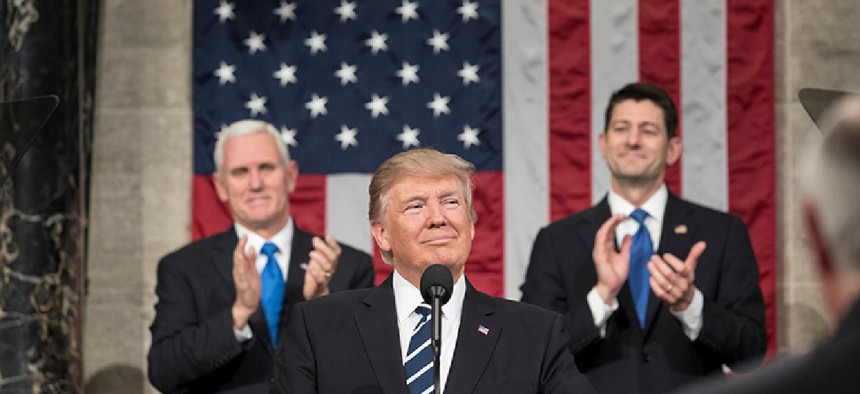President Donald Trump’s 2018 executive budget contains trillions of dollars in cuts to some of the nation’s most vital and popular public programs: Meals on Wheels, Superfund sites, Section 8 housing and Medicaid are among those threatened. Overlooked in the bloodbath of red ink are plans to gut the nation’s premier microlending program, with dire consequences for entrepreneurship in New York and nationwide.
If the White House gets its way, the Treasury Department’s $247 million Community Development Financial Institutions fund would be liquidated. And the small businesses driving the 21st century economy would be the ones stuck paying the price.
In New York City alone, more than 1,000 businesses benefited directly from microloans and business education made possible by the CDFI fund in 2016, as well as a smaller effort at the Small Business Administration. Overall, roughly 15,000 enterprises received federally supported microloans nationwide, as well as training and guidance to put that money to the best use.
Through these critical federal-local partnerships, the smallest businesses gain access to the capital and know-how that they need to grow, both creating jobs and building stronger communities in the process.
RELATED: Why do you hate Trump so much?
With small business and entrepreneurship fueling economic growth like never before, these programs invest dollars where they are most effective. At a time when bank consolidation has made securing business capital harder than ever, businesses have fewer and fewer place to turn. Thanks to these programs, nearly $260 million will be available to hundreds of local nonprofit lenders this year. Those nonprofits, in turn, make microloans worth nearly $4 billion, owing to careful investments and cooperation with commercial banks.
This is the kind of public-private partnership that should entice the president and his C-suite cabinet. Instead, for the second time in as many budgets, the White House has decided to eliminate most microlending, while pillaging what remains.
These cuts will hit hard in the president’s home state. New York enterprises from the Lower East Side and the South Bronx to the North Country and West Buffalo benefited from $15 million in CDFI funds and $8 million from the Small Business Administration. Over the past 20 years, New York state’s 78 CDFIs have received more than $207 million, second only to California. The amount businesses receive is even greater.
As a side effect of consolidation and regulation, commercial banks are unwilling, and even unable, to make the $5,000 or $25,000 loans most fledgling entrepreneurs require (the majority of business loans begin at $250,000). These banks are happy to work with nonprofit intermediaries, however, which use their federal funds as collateral. As a result, every dollar from Washington has a multiplier effect locally.
That is how a group like the Manhattan-based Accion East was able to take $1.75 million in CDFI funding last year and turn it into 363 loans worth $3.9 million in New York, with another $7.6 million flowing to 703 businesses in Boston, Miami and Orlando. The typical loan was around $10,000.
“Because we’re nonprofits, we can make loans no one else can anymore,” says Paul Quintero, CEO of Accion East. “I like to think of us as the Gerber for small businesses. Raising kids isn’t exactly profitable, but we do it anyway. And when our kids grow up, then the banks are interested.” Since 1991, Accion East has made 20,000 loans totaling $152 million in New York, Massachusetts and Florida.
This work goes beyond simple loans, too. These federal programs also support technical assistance and business training, including nearly $40 million from the CDFI fund, the Small Business Administration’ $12 million PRIME program, and the Commerce Department’s Minority Business Development Agency, all of which the White House wants to cut. Such aid helps these businesses make the most of their loans – and improves the odds that government and nonprofit lenders are repaid.
“Our clients may not have perfect credit or a lot of financial expertise, which usually shuts them out of the market,” says Yanki Tshering, executive director of the 20-year-old Business Center for New Americans. “What they do have is a plan and a dream, and we work with them to achieve that.”
RELATED: Ethics reform? Lawmakers won’t even fake it anymore
Without this support, Patricia Williams might never have made T&T Express Shipping into a growing shipping service between New York and the Caribbean. Started in 2007, almost two decades after Williams emigrated from Trinidad, the company saw a slowdown in business due to the Great Recession. When she approached a local bank in Brooklyn for help, she was denied, since her request was too small.
A banker introduced her to BCNA, from whom she secured a $30,000 loan in 2011 to help with payroll. The following year, she borrowed another $50,000 to buy new vehicles, which helped her expand in 2013 to New Jersey, followed by Florida. Today, Williams has a staff of 10.
In early May, Congress overcame partisanship to rescue these programs from the White House’s budgetary axe through the end of the fiscal year, even going so far as to add an additional $36 million in CDFI grants.
The reason is simple: Microlending works. It also helps that 56 percent of all CDFI-certified lenders are located in red states. Indeed, many of the struggling suburbs and small towns that Trump won over are benefiting from these programs as much as any major city. And yet the battle will continue over the same cuts, which were reintroduced by the White House’s 2018 budget.
It now falls to the New York congressional delegation to once again stand together and protect these critically important programs. This is not a matter of red or blue, but of green. The smallest businesses across the city, the state and the country are counting on their representatives to defend microlending and champion the benefits of an entrepreneurial economy.
Washington should be investing in microlending, not bankrupting it.
Matt A.V. Chaban is policy director at the Center for an Urban Future.


